
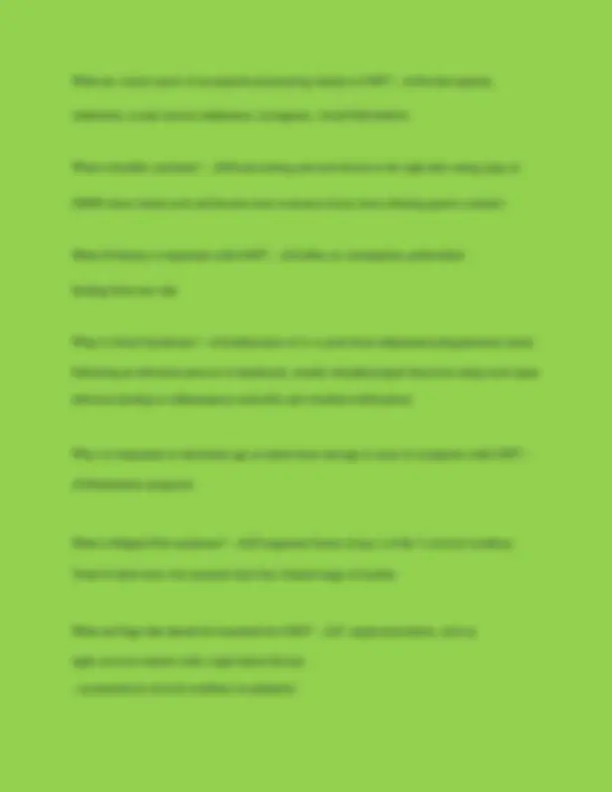
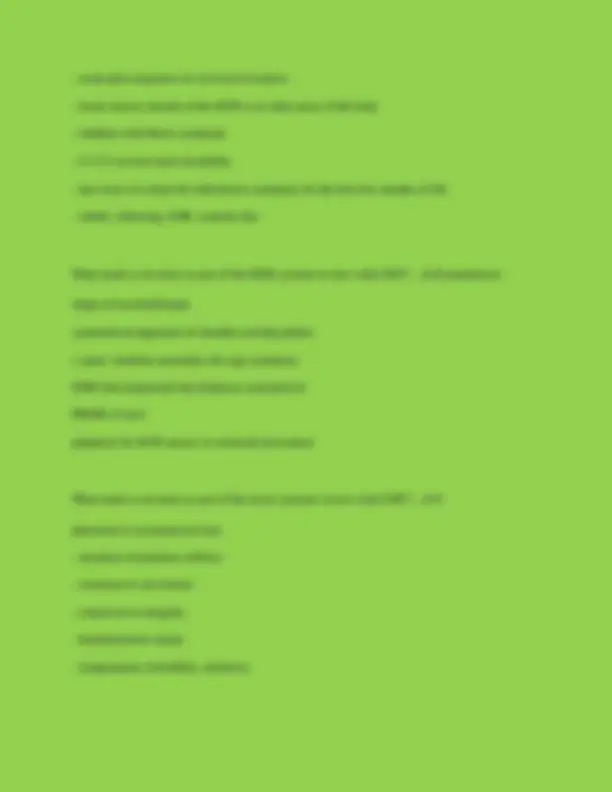
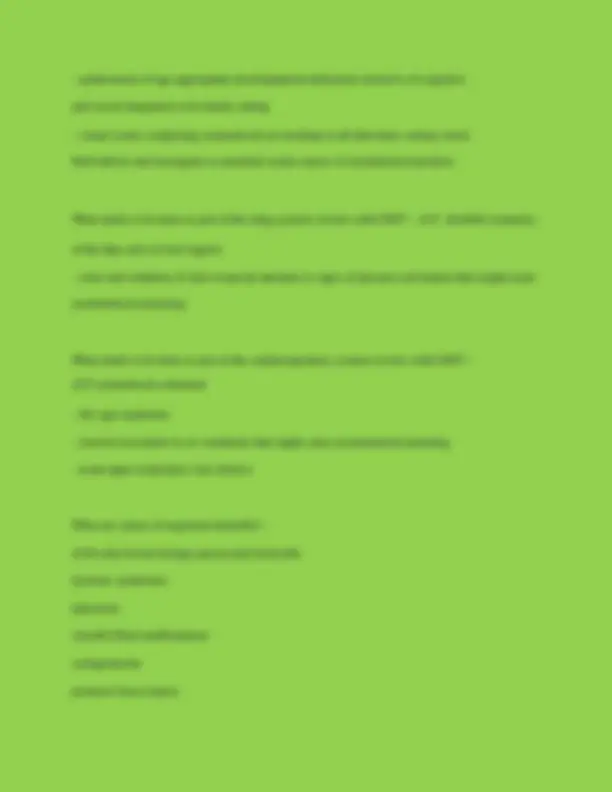
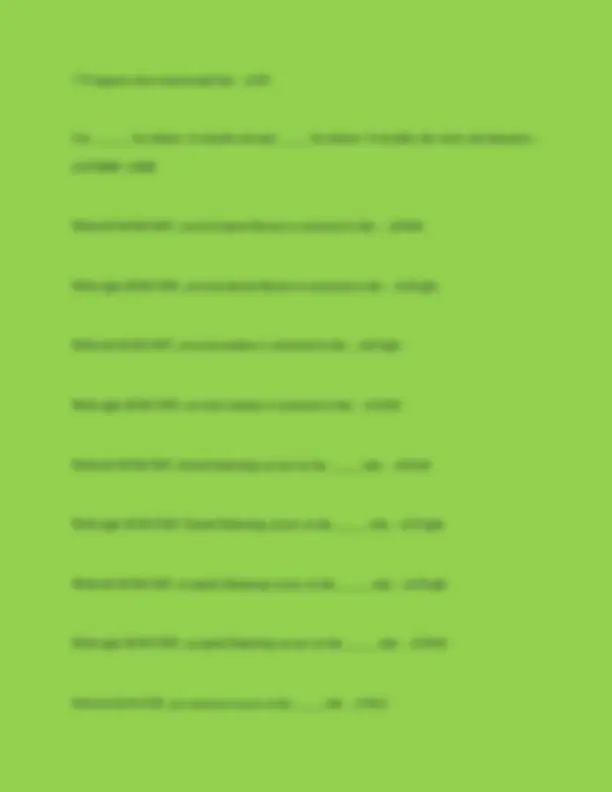
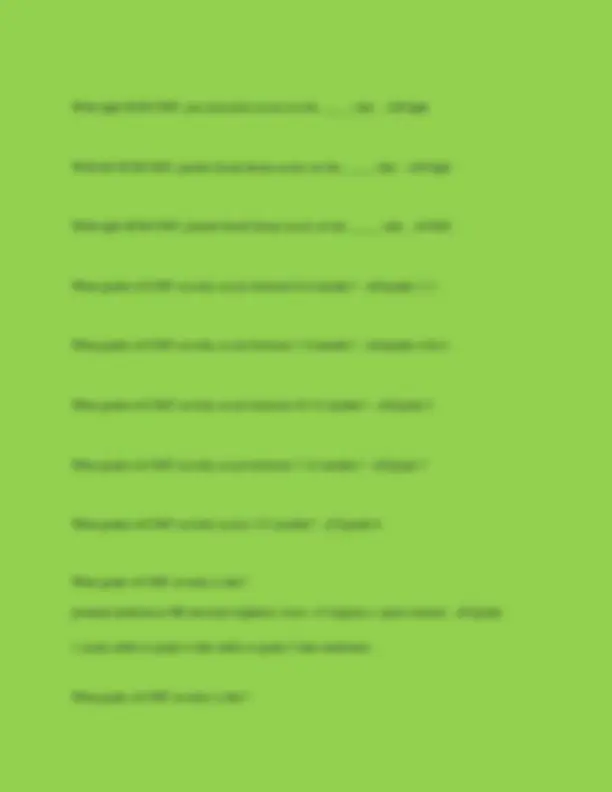
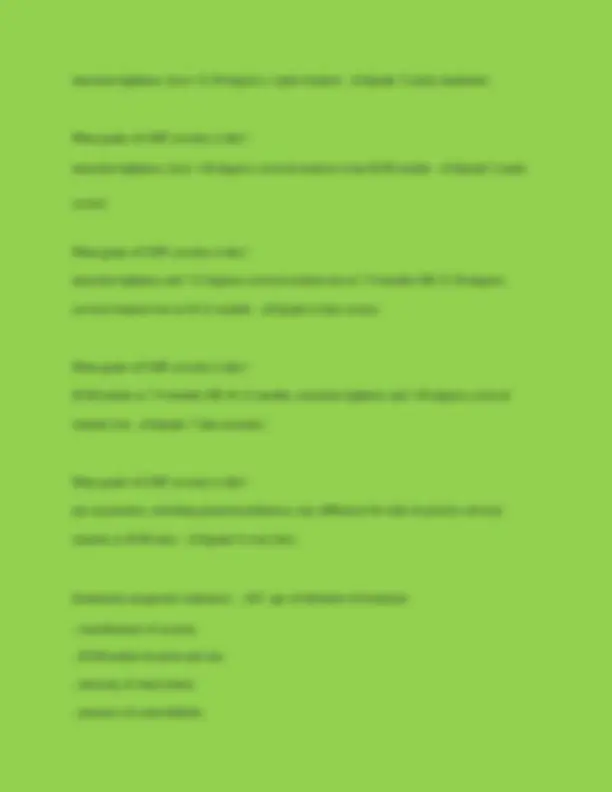
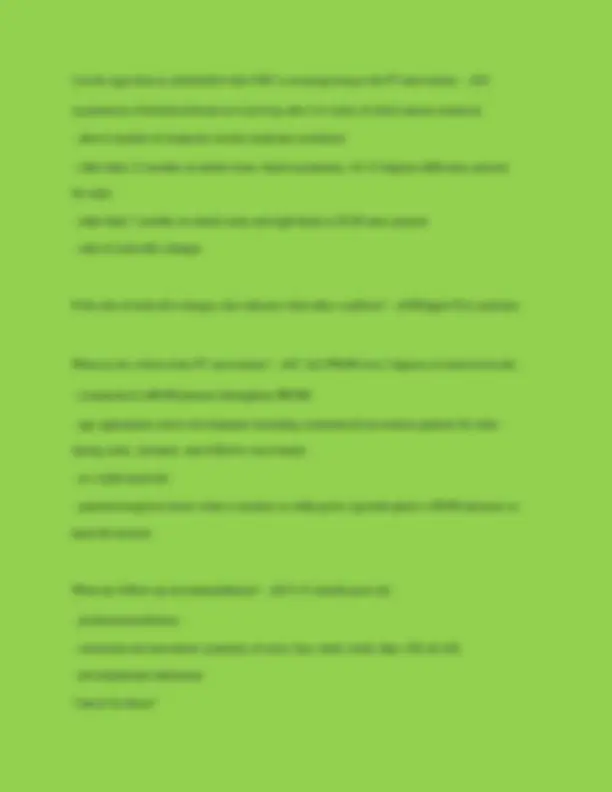


Study with the several resources on Docsity

Earn points by helping other students or get them with a premium plan


Prepare for your exams
Study with the several resources on Docsity

Earn points to download
Earn points by helping other students or get them with a premium plan
Community
Ask the community for help and clear up your study doubts
Discover the best universities in your country according to Docsity users
Free resources
Download our free guides on studying techniques, anxiety management strategies, and thesis advice from Docsity tutors
CMT Final Exam Study Guide with 100% Correct Answers | Verified for Latest Update List the 4 reasons that medications are used - ✔✔ 1. to cure 2. to prevent 3. to manage 4. to relieve/reduce List the 4 basic rules - ✔✔ 1. Attend an MTTP class and be certified by the Maryland Nursing Board 2. Only a DN can delegate to CMT's 3. All prescription meds must have a Dr. order and a label 4. All Over the Counter Meds must have a Dr. Order and a Label List 8 components of the Medication Cycle - ✔✔ 1. Observe the person 2. Report Observations 3. assist in Dr. visits 4. Obtain Meds from pharmacy 5. Store meds safely 6. Administer meds correctly 7. Ensure meds are taken
Typology: Exams
1 / 13

This page cannot be seen from the preview
Don't miss anything!








What 9 specific health history factors should be obtained prior to an initial screening of a child w/CMT? - ✔✔
What are neurological causes of asymmetrical posturing related to CMT? - ✔✔brachial plexus injury, CNS lesions, astrocytoma, brain stem or cerebellar gliomas, agenesis of CNS structures, hearing impairments
Argenta's classical classification Motor Function Scale goes from ___ to ___. - ✔✔ 0 - 5 What score is this on the Motor Function Scale? <0 degrees below horizontal line - ✔✔ 0 What score is this on the Motor Function Scale? 0 degrees on horizontal line - ✔✔ 1 What score is this on the Motor Function Scale? 0 - 15 degrees head above horizontal line - ✔✔ 2 What score is this on the Motor Function Scale? 15 - 45 degrees head above horizontal line - ✔✔ 3 What score is this on the Motor Function Scale? 45 - 75 degrees head above horizontal line - ✔✔ 4 What score is this on the Motor Function Scale?
75 degrees above horizontal line - ✔✔ 5 Use ______ for infants <4 months old and _____ for infants >4 months old. (tests and measure) - ✔✔TIMP; AIMS With left SCM CMT, cervical lateral flexion is restricted to the: - ✔✔left With right SCM CMT, cervical lateral flexion is restricted to the: - ✔✔right With left SCM CMT, cervical rotation is restricted to the: - ✔✔right With right SCM CMT, cervical rotation is restricted to the: - ✔✔left With left SCM CMT, frontal flattening occurs on the _____ side. - ✔✔left With right SCM CMT, frontal flattening occurs on the _____ side. - ✔✔right With left SCM CMT, occipital flattening occurs on the _____ side. - ✔✔right With right SCM CMT, occipital flattening occurs on the _____ side. - ✔✔left With left SCM CMT, jaw retraction occurs on the _____ side. - ✔✔left
muscular tightness; loses 15-30 degrees c-spine rotation - ✔✔grade 2 (early moderate) What grade of CMT severity is this? muscular tightness; loses >30 degrees cervical rotation or has SCM nodule - ✔✔grade 3 (early severe) What grade of CMT severity is this? muscular tightness and >15 degrees cervical rotation lost at 7-9 months OR 15-30 degrees cervical rotation lost at 10-12 months - ✔✔grade 6 (late severe) What grade of CMT severity is this? SCM nodule at 7-9 months OR 10-12 months, muscular tightness and >30 degrees cervical rotation lost - ✔✔grade 7 (late extreme) What grade of CMT severity is this? any asymmetry, including postural preference, any difference b/t sides in passive cervical rotation or SCM mass - ✔✔grade 8 (very late) Summarize prognostic indicators. - ✔✔- age of initiation of treatment
List the signs that an infant/child with CMT is not progressing with PT intervention. - ✔✔- asymmetries of head/neck/trunk not resolving after 4-6 weeks of initial intense treatment